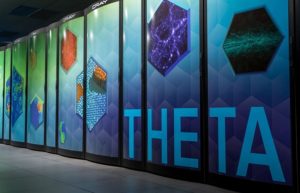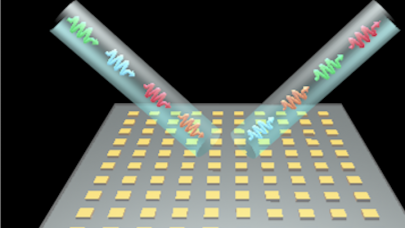Researchers have been working for many decades to convert abundant, renewable biomass – e.g. crops and algae – into viable alternatives to nonrenewable, dirtier fossil fuels. But converting the carbon in biomass to carbon fuels is easier said than done; now, researchers at Argonne National Laboratory have used in-house supercomputing to develop a machine learning model to accelerate the development process for necessary catalysts.
At high temperatures, biomass can be converted into petroleum-like pyrolysis oil – but in order to be useful, that oil has to have its excess oxygen removed using a catalyst. But the catalyst itself – molybdenum carbide – is hindered by oxygen building up on its surface. Researchers have proposed adding a dopant (e.g. nickel or zinc) to stop the oxygen from building up as quickly on the surface of the catalyst.
“The problem is to find the right combination of dopant and surface structure,” said Hieu Doan, an assistant scientist in Argonne National Laboratory’s Materials Science Division (MSD), in an interview with Argonne’s Joseph E. Harmon. “Molybdenum carbide has a very complicated structure. We thus called upon supercomputing combined with theoretical calculation to simulate the behavior for not only the surface atoms binding with oxygen but also atoms nearby.”

The supercomputer enabled the researchers to build a database of 20,000 different configurations and binding energies for oxygen and the molybdenum carbide with dozens of different dopants. That work was made possible by Theta, Argonne’s 6.92 Linpack petaflops HPE-built, Intel-powered supercomputer. Theta ranked 84th on the most recent Top500 list.
Using that supercomputer-enabled database, the researchers then trained a deep learning model to be able to predict the results of many more combinations of dopants and configurations.
“Instead of being limited to evaluating a few thousand catalyst structures over months with conventional computational methods,” Doan said, “with our deep learning model we can now do accurate and inexpensive calculations for tens of thousands of structures in milliseconds. It is materials screening on steroids.”
The researchers hope to handle more than a million structures and new binding atoms (e.g. hydrogen) in the future, and they’re also interested in exploring how their computational approach can be applied to other kinds of decarbonization work. For now, though, the team has submitted its work to the Chemical Catalysts for Bioenergy Consortium for real-world evaluation on a subset of the models’ initial predictions.
To learn more about this research, read the reporting from Argonne’s Joseph E. Harmon here.


























































